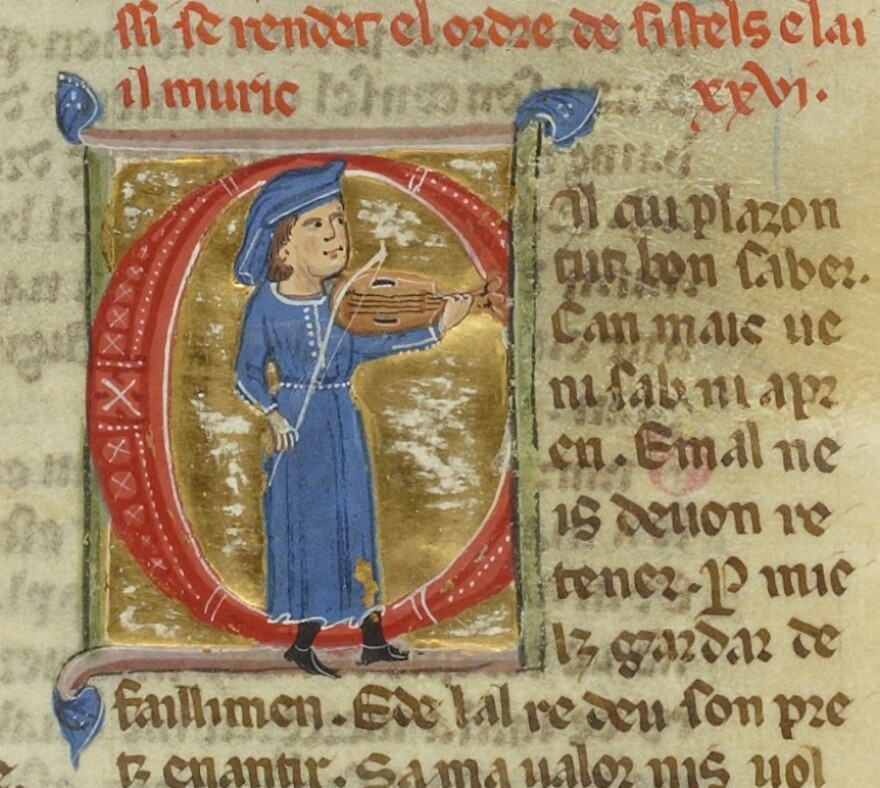Though the church was instrumental in the development of musical notation, it was not the sole arbiter of music in medieval times. The high middle ages were also the time of the troubadours or trouveres; French composers and performers of secular lyric poetry and song beginning in the late 11th Century.
You might recall images from movies or paintings of a court jester strumming a lute, or perhaps the romantic, misunderstood vagabond. But the evidence from history shows us that these troubadours were actually well educated, sophisticated writers of verse and poetry. Their songs, called cancons, were mainly entertainments for nobility and expressed the virtues and ideals of what we call courtly love, a refined love, a concept of absolute chivalry; that love is the source of all life itself and therefore one must strive to be worthy of love. This was the time of knights, lords and ladies.
One of the most prominent examples of the troubadours was Bernart de Ventadorn. The details of his life are vague. They come to us mainly from his own poetry, which is admittedly dramatic and in some cases self-contradictory. He was possibly born the son of a simple baker and his wife in the castle of Ventadorn, and learned his craft from his protector Viscount Eble III. In some accounts he fell in love with his master’s wife and therefore was forced to leave. From there, Bernart entered the service of the Duchess of Normandy, the future wife of King Henry II of England. Then he went to the court of Toulouse. Finally, he joined a monastery where he spent the remainder of his days.

Bernart’s work is unique from other secular composers of the time because it has survived over the centuries. We now have 45 poems and 18 melodies, plus other fragments that are all credited to him. In fact, we can trace one of the most popular songs and poems of the Middle Ages to that poet, called When I See the Lark Move.





